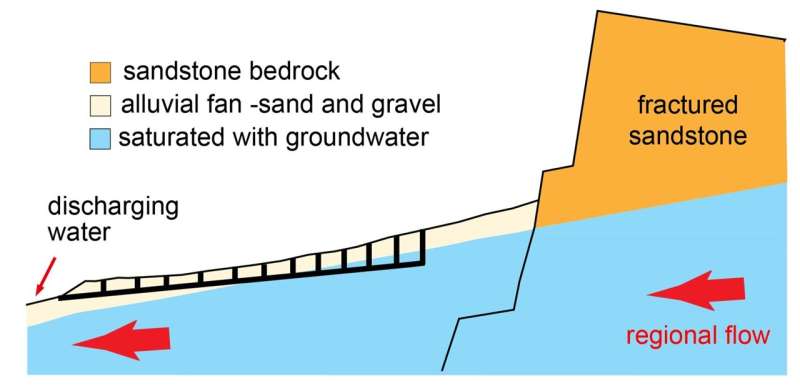by Colorado State University

Newly published research on indoor air quality from Colorado State University shows wildfire smoke may linger in homes long after the initial blaze has been put out or winds have shifted.
The findings, published in Science Advances, show that wildfire smoke can attach to home surfaces like carpet, drapes or counters—extending the exposure for those inside and potentially causing health problems even after an initial cleaning activity by air purifiers. However, Professor Delphine Farmer said the research also shows that simple surface cleaning—like vacuuming, dusting or mopping—can reduce exposure and limit risk.
The research illustrates the hidden and persistent health threats many in the Western U.S. are facing given the increase in wildfires over the last decade, she said.
"This research shows that events like the Marshall Fire in Colorado, the wildfires in Canada and the recent fires in Hawaii present serious exposure potential—not just when they occur but well after," said Farmer, who is based in the Department of Chemistry at CSU. "This paper is a key initial step towards providing actionable and practical information on how to protect yourself and clean your home."
To better understand how smoke enters and then stays in buildings, researchers burned pine wood chips in a net zero energy residential testing facility operated by the National Institute of Standards and Technology (NIST) in Maryland. That facility is frequently used to study how different systems impact the ways energy, water and air move through a single-family house. The detailed instrumentation available for that work was perfectly suited to this research, said Dustin Poppendieck, an environmental researcher at NIST who helped coordinate the project.


Those smoke injection sessions occurred regularly over several days, and Farmer said the total amount applied was comparable or slightly under the particulate levels seen during the Canadian wildfires. The team then took careful measurements of air quality levels and surface conditions after opening exterior doors and windows, cleaning and use of the home's built-in air cleaning systems.
The CSU team was particularly interested in the gas-phase of compounds developing from the smoke, while other teams from the University of California San Diego, CU Boulder and the University of North Carolina Chapple Hill explored different phases and interactions across the home. The team then compared findings between states to confirm what was actually happening in the home after the burn.
Farmer said findings from this interdisciplinary research approach could also be applicable to other large air pollution events like the train derailment in East Palestine, Ohio, where the same principles of compounds sticking to surfaces are likely to occur.
Because there has not been a lot of similar indoor air research, the team leaned on previous findings from others around the effects of cigarette smoke to inform their approach. Farmer said burning nicotine causes specific compounds with well-known health concerns and that the comparison to their project findings was informative.
"Nicotine reacts on surfaces to create a particularly nasty set of compounds called nitrosamines, which is where the real concern from third-hand smoke that is left behind comes from," she said. "Whereas with wildfire smoke, we found there was a huge diversity of organic compounds that stick to surfaces, which then slowly bleed off."
The amount, persistence and variety of compounds from the wildfire smoke in each case could potentially change the recommended approaches for cleaning the indoor spaces. Farmer said that is an area of research the team hopes to explore in the future.


For now, she said the team was able to show that the amount of smoke left on surfaces was proportional to the surface area that was cleaned. That means simple cleaning and specifically addressing large but little noticed spaces that may trap harmful compounds such as cabinets and HVAC systems could be beneficial right away.
"As we continue this research, we would like to know just how effective different cleaning approaches are and when residents should move from relatively simple steps like using commercial cleaning supplies for mopping to more drastic steps like replacing the drywall altogether," Farmer said.
Farmer's team was also recently funded to research how smog may enter and remain in the home in much the same way as wildfire smoke. That work will be particularly important in Colorado where ground-level ozone pollution is a continuing issue.
"In the future I want to explore how the economics of making a more energy efficient building play into these questions and help people understand the risks and potential solutions available to them," Farmer said. "CSU is well positioned to lead this kind of interdisciplinary work and address the practical implications because of the land-grant service mission that drives our university."
More information: Jienan Li et al, The persistence of smoke VOCs indoors: partitioning, surface cleaning, and air cleaning in a smoke-contaminated house, Science Advances (2023). DOI: 10.1126/sciadv.adh8263. www.science.org/doi/10.1126/sciadv.adh8263
Journal information: Science Advances
Provided by Colorado State University
Explore furtherIndoor air quality experiments show exposure risks while cooking, cleaning









